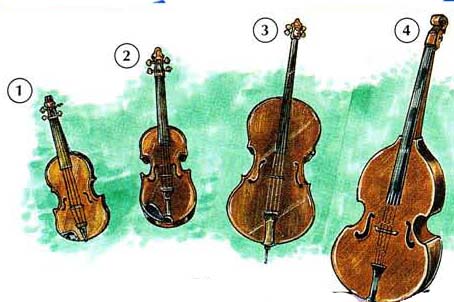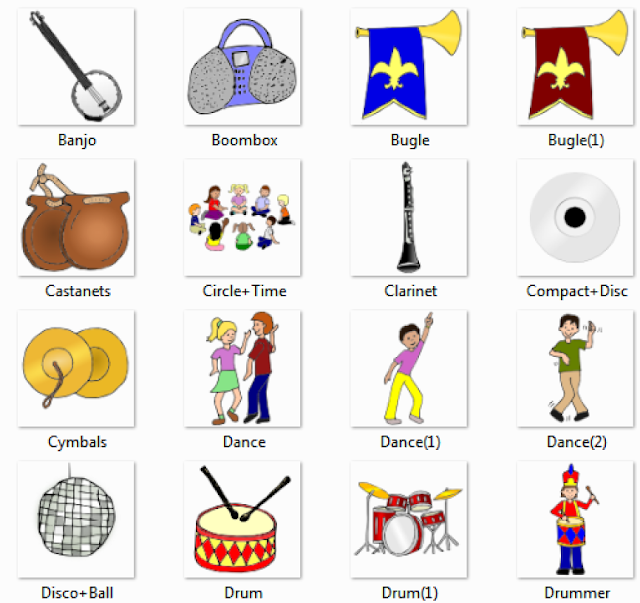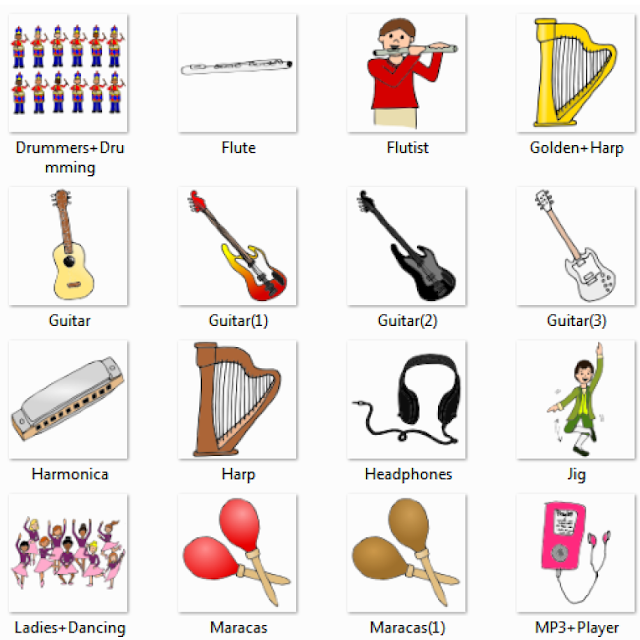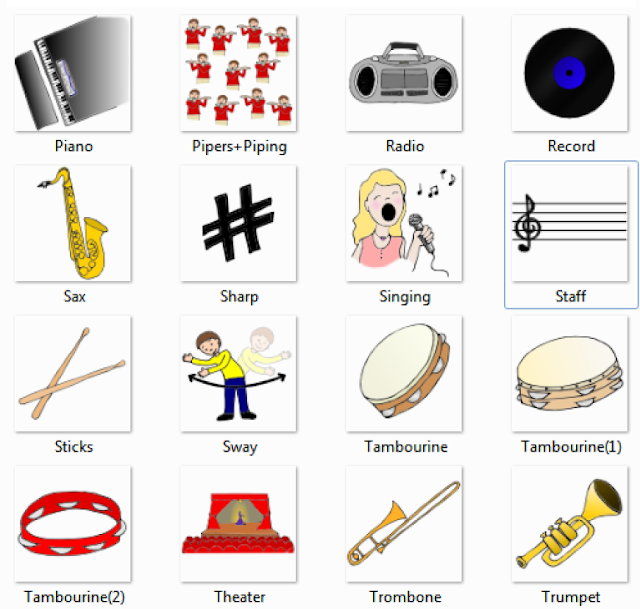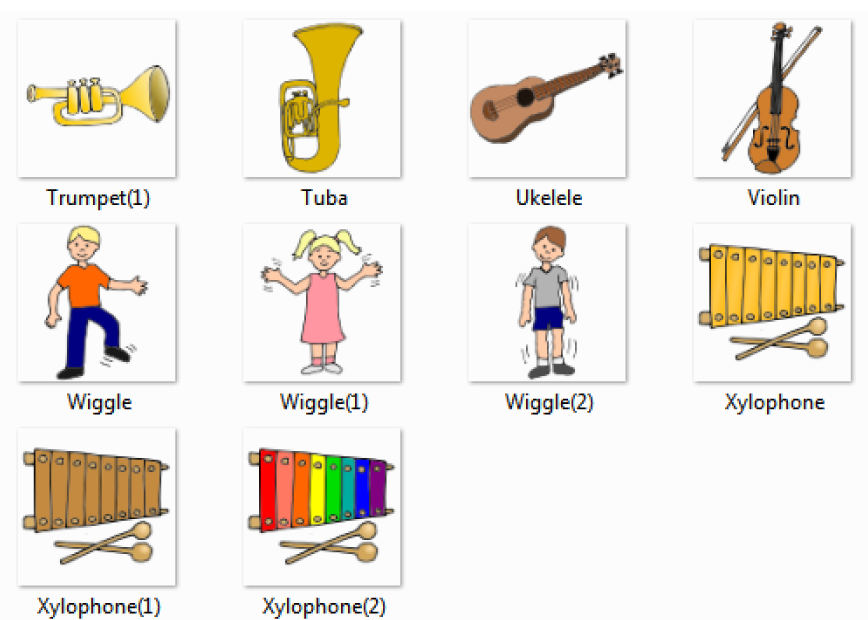
Ashish Pant's Blog
Tuesday, 27 August 2013
Tuesday, 13 August 2013
Music -
Music is an art form whose medium is sound and silence. Its common elements are pitch (which governs melody and harmony), rhythm (and its associated concepts tempo, meter, and articulation), dynamics, and the sonic qualities of timbre and texture.
Actually Music is :-
- The art or science of combining vocal or instrumental sounds (or both) to produce beauty of form, harmony, and expression of emotion.
- The vocal or instrumental sound produced in this way.
The creation, performance, significance, and even the definition of music vary according to culture and social context. Music ranges from strictly organized compositions (and their recreation in performance), through improvisational music to aleatoric forms. Music can be divided into genresand subgenres, although the dividing lines and relationships between music genres are often subtle, sometimes open to personal interpretation, and occasionally controversial. Within the arts, music may be classified as a performing art, a fine art, and auditory art. It may also be divided among art music and folk music. There is also a strong connection between music and mathematics. Music may be played and heard live, may be part of a dramatic work or film, or may be recorded.
To many people in many cultures, music is an important part of their way of life. Ancient Greek and Indian philosophers defined music as tones ordered horizontally as melodies and vertically as harmonies. Common sayings such as "the harmony of the spheres" and "it is music to my ears" point to the notion that music is often ordered and pleasant to listen to. However, 20th-century composer John Cage thought that any sound can be music, saying, for example, "There is no noise, only sound." Musicologist Jean-Jacques Nattiez summarizes the relativist, post-modern viewpoint: "The border between music and noise is always culturally defined—which implies that, even within a single society, this border does not always pass through the same place; in short, there is rarely a consensus ... By all accounts there is no single and intercultural universal concept defining what music might be."
History
Prehistoric eras
Prehistoric music can only be theorized based on findings from paleolithic archaeology sites. Flutes are often discovered, carved from bones in which lateral holes have been pierced; these are thought to have been blown at one end like the Japanese shakuhachi. The Divje Babe flute, carved from a cave bear femur, is thought to be at least 40,000 years old. Instruments such as the seven-holed flute and various types of stringed instruments, such as the Ravanahatha, have been recovered from the Indus Valley Civilization archaeological sites. India has one of the oldest musical traditions in the world—references to Indian classical music (marga) are found in the Vedas, ancient scriptures of the Hindu tradition. The earliest and largest collection of prehistoric musical instruments was found in China and dates back to between 7000 and 6600 BC. The Hurrian song, found on clay tablets that date back to approximately 1400 BC, is the oldest surviving notated work of music.
Ancient Egypt
The ancient Egyptians credited one of their gods, Thoth, with the invention of music, which Osiris in turn used as part of his effort to civilize the world. The earliest material and representational evidence of Egyptian musical instruments dates to the Predynastic period, but the evidence is more securely attested in the Old Kingdom when harps, flutes and double clarinets were played. Percussion instruments, lyres and lutes were added to orchestras by the Middle Kingdom. Cymbals frequently accompanied music and dance, much as they still do in Egypt today. Egyptian folk music, including the traditional Sufi dhikr rituals, are the closest contemporary music genre to ancient Egyptian music, having preserved many of its features, rhythms and instruments.
Asian cultures
Indian classical music is one of the oldest musical traditions in the world. The Indus Valley civilization has sculptures that show dance and old musical instruments, like the seven holed flute. Various types of stringed instruments and drums have been recovered from Harrappa and Mohenjo Daro by excavations carried out by Sir Mortimer Wheeler. TheRigveda has elements of present Indian music, with a musical notation to denote the metre and the mode of chanting. Indian classical music (marga) is monophonic, and based on a single melody line or raga rhythmically organized through talas. Hindustani music was influenced by the Persian performance practices of the Afghan Mughals. Carnatic music popular in the southern states, is largely devotional; the majority of the songs are addressed to the Hindu deities. There are a lot of songs emphasising love and other social issues.
Indian Music Culture comprises of the 7 Swaras :- Sa Re Ga Ma Pa Dha Ni.
Asian music covers the music cultures of Arabia, Central Asia, East Asia, South Asia, and Southeast Asia. Chinese classical music, the traditional art or court music of China, has a history stretching over around three thousand years. It has its own unique systems of musical notation, as well as musical tuning and pitch, musical instruments and styles or musical genres. Chinese music is pentatonic-diatonic, having a scale of twelve notes to an octave (5 + 7 = 12) as does European-influenced music. Persian music is the music of Persia and Persian language countries: musiqi, the science and art of music, and muzik, the sound and performance of music (Sakata 1983).
Role of Media and Technology
The music that composers make can be heard through several media; the most traditional way is to hear it live, in the presence of the musicians (or as one of the musicians), in an outdoor or indoor space such as an amphitheatre, concert hall, cabaret room or theatre. Live music can also be broadcast over the radio, television or the Internet. Some musical styles focus on producing a sound for a performance, while others focus on producing a recording that mixes together sounds that were never played "live." Recording, even of essentially live styles, often uses the ability to edit and splice to produce recordings considered better than the actual performance.
As talking pictures emerged in the early 20th century, with their prerecorded musical tracks, an increasing number of moviehouse orchestra musicians found themselves out of work. During the 1920s live musical performances by orchestras, pianists, and theater organists were common at first-run theaters.[35] With the coming of the talking motion pictures, those featured performances were largely eliminated. The American Federation of Musicians (AFM) took out newspaper advertisements protesting the replacement of live musicians with mechanical playing devices. One 1929 ad that appeared in the Pittsburgh Press features an image of a can labeled "Canned Music / Big Noise Brand / Guaranteed to Produce No Intellectual or Emotional Reaction Whatever"[36]
Since legislation introduced to help protect performers, composers, publishers and producers, including the Audio Home Recording Act of 1992 in the United States, and the 1979 revised Berne Convention for the Protection of Literary and Artistic Works in the United Kingdom, recordings and live performances have also become more accessible through computers, devices and Internet in a form that is commonly known as Music-On-Demand.
In many cultures, there is less distinction between performing and listening to music, since virtually everyone is involved in some sort of musical activity, often communal. In industrialized countries, listening to music through a recorded form, such as sound recording or watching a music video, became more common than experiencing live performance, roughly in the middle of the 20th century.
Sometimes, live performances incorporate prerecorded sounds. For example, a disc jockey uses disc records for scratching, and some 20th-century works have a solo for an instrument or voice that is performed along with music that is prerecorded onto a tape. Computers and many keyboards can be programmed to produce and play Musical Instrument Digital Interface (MIDI) music. Audiences can also become performers by participating in karaoke, an activity of Japanese origin centered on a device that plays voice-eliminated versions of well-known songs. Most karaoke machines also have video screens that show lyrics to songs being performed; performers can follow the lyrics as they sing over the instrumental tracks.
Role of Internet
The advent of the Internet has transformed the experience of music, partly through the increased ease of access to music and the increased choice. Chris Anderson, in his book The Long Tail: Why the Future of Business is Selling Less of More, suggests that while the economic model of supply and demand describes scarcity, the Internet retail model is based on abundance. Digital storage costs are low, so a company can afford to make its whole inventory available online, giving customers as much choice as possible. It has thus become economically viable to offer products that very few people are interested in. Consumers' growing awareness of their increased choice results in a closer association between listening tastes and social identity, and the creation of thousands of niche markets.
Another effect of the Internet arises with online communities like YouTube and Facebook, a social networking service. Such sites simplify connecting with other musicians, and greatly facilitate the distribution of music. Professional musicians also use YouTube as a free publisher of promotional material. YouTube users, for example, no longer only download and listen to MP3s, but also actively create their own. According to Don Tapscott and Anthony D. Williams, in their book Wikinomics, there has been a shift from a traditional consumer role to what they call a "prosumer" role, a consumer who both creates and consumes. Manifestations of this in music include the production of mashes, remixes, and music videos by fans.
Business
The music industry refers to the business industry connected with the creation and sale of music. It consists of record companies, labels and publishers that distribute recorded music products internationally and that often control the rights to those products. Some music labels are "independent," while others are subsidiaries of larger corporate entities or international media groups. In the 2000s, the increasing popularity of listening to music as digital music files on MP3 players, iPods, or computers, and of trading music on file sharing sites or buying it online in the form of digital files had a major impact on the traditional music business. Many smaller independent CD stores went out of business as music buyers decreased their purchases of CDs, and many labels had lower CD sales. Some companies did well with the change to a digital format, though, such as Apple's iTunes, an online store that sells digital files of songs over the Internet.
Types Of Music Instruments
MUSICAL INSTRUMENTS
A. Strings
B. Woodwinds
C. Brass
D. Percussion
E. Keyboard Instruments
F. Other Instruments
Music Pictures for Classroom and Therapy Use
Banjo, Boombox, Bugle, Castanets, Circle Time, Clarinet, Compact Disc, Cymbals, Dance, Disco Ball, Drum , Drummer
Drummers , Flute, Flutist , Golden Harp, Guitar, Harmonica, Harp, Headphones, Jig, Ladies Dancing, Maracas, MP3 Player
Music, Music Note, Music Time, Note, Parade, Pat
Piano, Pipers Piping , Radio, Record, Sax, Sharp, Singing, Staff, Sticks, Sway, Tambourine, Theater, Trombone, Trumpet
Trumpet , Tuba, Ukelele, Violin, Wiggle, Xylophone
Musicians
The words for musicians who play individual instruments:
cello
cellist
clarinet
clarinetist
drums
drummer
guitar
guitarist
keyboard
keyboardist
piano
pianist
saxophone
saxophonist
trombone
trombonist
trumpet
trumpeter
violin
violinist
More words for people involved in music:
alto a female singer with a low voice
bass a male singer with a low voice
choir or chorus director someone who directs a group of singers
conductor someone who directs a band or an orchestra
singer a person who makes music with his or her voice
soprano a female singer with a high voice
tenor a male singer with a high voice
cellist
clarinet
clarinetist
drums
drummer
guitar
guitarist
keyboard
keyboardist
piano
pianist
saxophone
saxophonist
trombone
trombonist
trumpet
trumpeter
violin
violinist
alto a female singer with a low voice
bass a male singer with a low voice
choir or chorus director someone who directs a group of singers
conductor someone who directs a band or an orchestra
singer a person who makes music with his or her voice
soprano a female singer with a high voice
tenor a male singer with a high voice
Music
blues: a style of slow jazz evolved from African-American songs
- I love to listen to the blues when I’m lonely.
classical: European musk of the latter half of the eighteenth century; music of acknowledged excellence and serious style
- Classical music is often performed by the city’s symphony orchestra.
country: a style of popular music from the rural American south and southwest
- A lot of country musicians live and work in Nashville, Tennessee.
folk/ ethnic: music that originates among the common people of a region
- Folk music was very popular in the United States in the 1960s.
jazz: a kind of music that originated with African-American bands in the southern United States, characterized by improvisation and strong, flexible rhythm
- Jazz is popular in many parts of the world.
oldies: popular music from an earlier decade
- Her favorite oldies are from the 1950s and 1960s.
popular: music that is appreciated by a large number of people during the current period of time
- That radio station plays only popular music.
rap: a currently popular style of music that originated among African-American performers, characterized by talking, rather than singing, in rhyme and rhythm
- Rap is for listening, not dancing.
rhythm and blues: a style of music with strong, simple rhythm and lyrics that originated in the late 1940s and early 1950s among African-American groups
- Rhythm and blues is great for swing dancing.
rock: a popular style of music played by bands with electric guitars, keyboards, and drums, often with emotional singing by a group or one singer
- Rock concerts are very popular among young people.
rock and roll: a style of music that began in the 1950s and combined elements of rhythm and blues and country
- There were a lot of TV shows with rock-and-roll dancers.
Social Media
'Social Media' refers to the means of interactions among people in which they create, share, and exchange information and ideas in virtual communities and networks.
Social media differentiates from traditional/industrial media in many aspects such as quality, reach, frequency, usability, immediacy, and permanence. There are many effects that stem from internet usage. According to Nielsen, internet users continue to spend more time with social media sites than any other type of site. At the same time, the total time spent on social media in the U.S. across PC and mobile devices increased by 37 percent to 121 billion minutes in July 2012 compared to 88 billion minutes in July 2011.
Most people associate social media with positive outcomes , yet this is not always the case. Due to the increase in social media websites, there seems to be a positive correlation between the usage of such media with cyber bullying, online sexual predators, and the decrease in face-to-face interactions. Social media may expose children to images of alcohol,tobacco, and sexual behaviors. Geocities, created in 1994, was one of the first social media sites. The concept was for users to create their own websites, characterized by one of six "cities" that were known for certain characteristics.
[Classification Of Social Media]
Social media technologies take on many different forms including magazines, Internet forums, weblogs, social blogs, microblogging, wikis, social networks,podcasts, photographs or pictures, video, rating and social bookmarking. Technologies include: blogs, picture-sharing, vlogs, wall-postings, music-sharing,crowdsourcing and voice over IP, to name a few. Many of these services can be integrated via social network aggregation platforms. By applying a set of theories in the field of media research (social presence, media richness) and social processes (self-presentation, self-disclosure) Kaplan and Haenlein created a classification scheme in their Business Horizons (2010) article, with six different types of social media: collaborative projects (for example, Wikipedia), blogs and microblogs (for example, Twitter), content communities (for example, YouTube and DailyMotion), social networking sites (for example, Facebook), virtual game worlds (e.g., World of Warcraft), and virtual social worlds (e.g. Second Life). However, the boundaries between the different types have been increasingly blurred.
Social Media Use
Mobile social media
When social media is used in combination with mobile devices it is called mobile social media. This is a group of mobile marketing applications that allow the creation and exchange of user-generated content. Due to the fact that mobile social media runs on mobile devices, it differentiates from traditional social media as it incorporates new factors such as the current location of the user (location-sensitivity) or the time delay between sending and receiving messages(time-sensitivity). According to Andreas Kaplan, mobile social media applications can be differentiated among four types:
- Space-timers (location and time sensitive): Exchange of messages with relevance for one specific location at one specific point in time (e.g., Facebook Places; Foursquare)
- Space-locators (only location sensitive): Exchange of messages, with relevance for one specific location, which are tagged to a certain place and read later by others (e.g., Yelp; Qype)
- Quick-timers (only time sensitive): Transfer of traditional social media applications to mobile devices to increase immediacy (e.g., posting Twitter messages or Facebook status updates)
- Slow-timers (neither location, nor time sensitive): Transfer of traditional social media applications to mobile devices (e.g., watching a YouTube video or reading a Wikipedia entry)
Only a few technology-loving, mind-stimulating and idea-generating individuals out there are still unplugged with social media. I am sure those too will join soon as well since social media is not just a platform for easy and simple advanced online marketing, it is also the revolution of our century!
Many people have tried to capture the importance of social media. In today’s post, we will introduce to you the most must-know advantages and disadvantages of social mediaso you’ll be aware of how to use it in the safest and most valuable possible ways!
5 Must-know Disadvantages of Social Media:
- The wrong online brand strategy could put you at a viral social disadvantage and may even damage your reputation, i.e, when you make a mistake offline, a few will know but when you make a mistake in front of hundreds or thousands of you online audience, most of them will know!
- Using social media for marketing and advertising could be more time consumingthan companies expect.
- In order to get social media’s full effect, you need to understand how it works,when and how to use it and which channels to focus on depending on your end goal of using social media.
- Social media can have a negative influence on worker productivity. Employees may waste valuable time using social media channels such as Facebook and Twitter. They can also use social media to attack the company’s reputation!
- When social media is used excessively or in the wrong way, it could have serious detrimental outcomes on both mental and even physical health of individuals.
5 Must-know Advantages of Social Media:
- When using social media for marketing products, social media could be easily utilized to create cost effective strategies and campaigns that can create viral results.
- Social media has the power to drive traffic to your website, blog, articles, etc.
- Social media is able to bring people together, especially when promoting global products or cause-related campaigns and ideas since it allows people from the different geographical location to meet at a single point and express their views.
- Social media could be the spark you are looking for to attract attention to your site, product or service. It could also be used to further build loyalty and long-term relations with your audience.
- Social media marketing could always be a fun and creative method of doing business.
Social Media's Management
There is an increasing trend towards using social media monitoring tools that allow marketers to search, track, and analyze conversation on the web about their brand or about topics of interest. This can be useful in PR management and campaign tracking, allowing the user to measure return on investment, competitor-auditing, and general public engagement. Tools range from free, basic applications to subscription-based, more in-depth tools.
The honeycomb framework defines how social media services focus on some or all of seven functional building blocks. These building blocks help explain the engagement needs of the social media audience. For instance, LinkedIn users are thought to care mostly about identity, reputation, and relationships, whereas YouTube’s primary features are sharing, conversations, groups, and reputation. Many companies build their own social containers that attempt to link the seven functional building blocks around their brands. These are private communities that engage people around a more narrow theme, as in around a particular brand, vocation or hobby, rather than social media containers such as Google+, Facebook, and Twitter. PR departments face significant challenges in dealing with viral negative sentiment directed at organizations or individuals on social media platforms (dubbed "sentimentitis"), which may be a reaction to an announcement or event.
Thus, lastly we would say that Social Networking is good if administered and tracked properly.
Subscribe to:
Comments (Atom)

